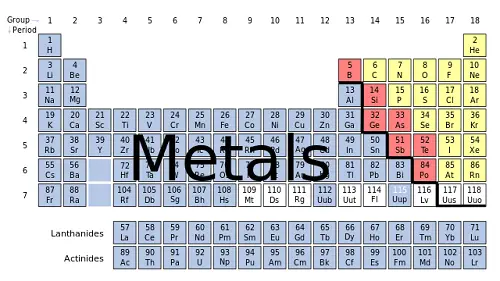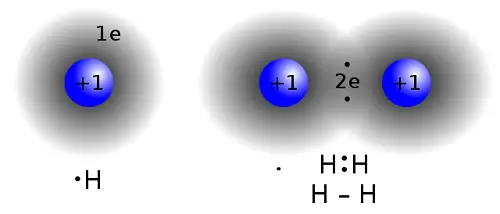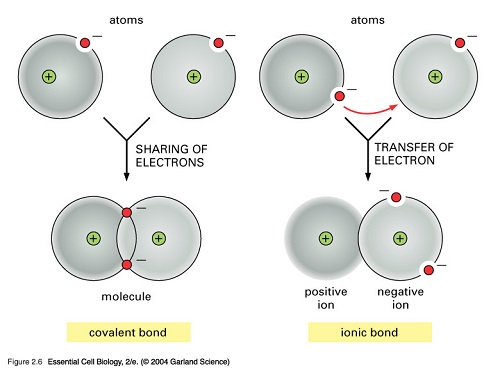The actinides and lanthanides are two big families of iso-structural, natural and synthesized chemical elements. They are called f- elements, due to the fact that the last electron of their atoms enters the f-orbital. Due to the similar outermost electronic configuration (they all have two s-electrons in their outermost electronic shell) actinides and lanthanides have similar properties.
The actinides and lanthanides are listed in two additional rows below the periodic table, with the actinium and lanthanum acting as a placeholder in its main body.
What are Actinides?
The actinides are a group of 15 elements (from actinium to lawrencium), with atomic numbers 89 to 103. They have a high diversity of the oxidation numbers and are radioactive elements.
Most of the actinides do not exist in the nature or exist in very limited amounts (traces). The most abundant naturally occurring actinides on Earth are Uranium and Thorium. The most abundant synthetically produced one is Plutonium.
Actinides have two s-electrons in their outermost electronic shell, which determines their metallic properties and the similarity of their chemical properties. The differences between the elements are mostly related to the third from the periphery to the center electronic shell, where the f-orbitals are successively filled.

The actinides have metallic properties, but due to the close proximity of the 5f and 6d orbitals, more electrons are involved in the chemical bounds. Actinides are forming compounds in which they have an oxidation state of +3, +4, +5, +6, +7. The most common oxidation state is+3.
The actinides are silver-white, high-melting metals.
It is known that for each group of elements with the increase in the sequence number the atomic radius also increases. Actinides are an exception to this rule – as a consequence of the incensement of the nuclear charge, the diameter decreases (actinide contraction).
The use of the actinides is related to their radioactivity. Uranium and Thorium are used in nuclear weapons, nuclear reactors, etc.; Americium is used in smoke detectors, spectrophotometry, etc.
What are Lanthanides?
The Lanthanides are a group of 15 elements (lanthanum to lutetium), with atomic numbers 57 to 71. They are relatively common elements – for example, the rarest of them – Pm – is occurring in nature more often than the iodine.
Lanthanides (similarly to the actinides) have two s-electrons in their outermost electronic shell, which determines their metallic properties and the similarity of their chemical properties. The differences between the elements are mostly related to the third from the periphery to the center electronic shell, where the f-orbitals are successively filled.
The lanthanides are chemically referred to as metals and are forming compounds in which they have oxidation state of +2,+3 and +4. The most common oxidation state is+3.
They are silver-white, high-melting metals.
With the increase in the sequence number of the lanthanides the atomic radius decreases (lanthanide contraction).
Lanthanides are used as alloying additions to the steel, as active and selective catalysts, in the radio- and electrotechnics.
Similarities Between Actinides and Lanthanides
- The actinides and lanthanides are two groups (15 elements each) of iso-structural, natural and synthesized chemical elements.
- The last electron of their atoms enters the f-orbital.
- Due to the similar outermost electronic configuration (they all have two s-electrons in their outermost electronic shell) actinides and lanthanides have similar properties.
- They are listed in additional rows below the periodic table, with the actinium and lanthanum acting as a placeholder in its main body.
- The most common oxidation state in both actinides and lanthanides is+3.
- They are highly electropositive and highly reactive elements.
- They are silver-white, high-melting metals, showing magnetic properties.
- With the increase in atomic number, due to the increase in the nuclear charge, there is a decrease in atomic size (actinide and lanthanide contraction).
- The nitrates, sulphates and perchlorates of actinides and lanthanides are soluble, the fluorides, carbonates and hydroxides are insoluble.
Summary: Actinides and Lanthanides
- The actinides and lanthanides are two groups of iso-structural chemical elements, listed in two additional rows below the periodic table’s main body.
- Due to the similar outermost electronic configuration actinides and lanthanides have similar properties.
- The most common oxidation state of actinides and lanthanides is+3.
- The actinides and lanthanides are silver-white, high-melting metals, showing magnetic properties. They are highly electropositive and highly reactive elements.
- With an increase in atomic number, there is a decrease in the atomic size of the actinides and lanthanides.
- The nitrates, sulphates and perchlorates of actinides and lanthanides are soluble, the fluorides, carbonates and hydroxides are insoluble.
Author: Dr. Mariam Bozhilova
Dr. Mariam Bozhilova has a Master’s degree in Ecology and PhD in Botany. Her main professional interests are in the fields of ecology, biology and chemistry. She has more than 10 years of professional experience in scientific research and environmental consultancy.












Leave a Reply